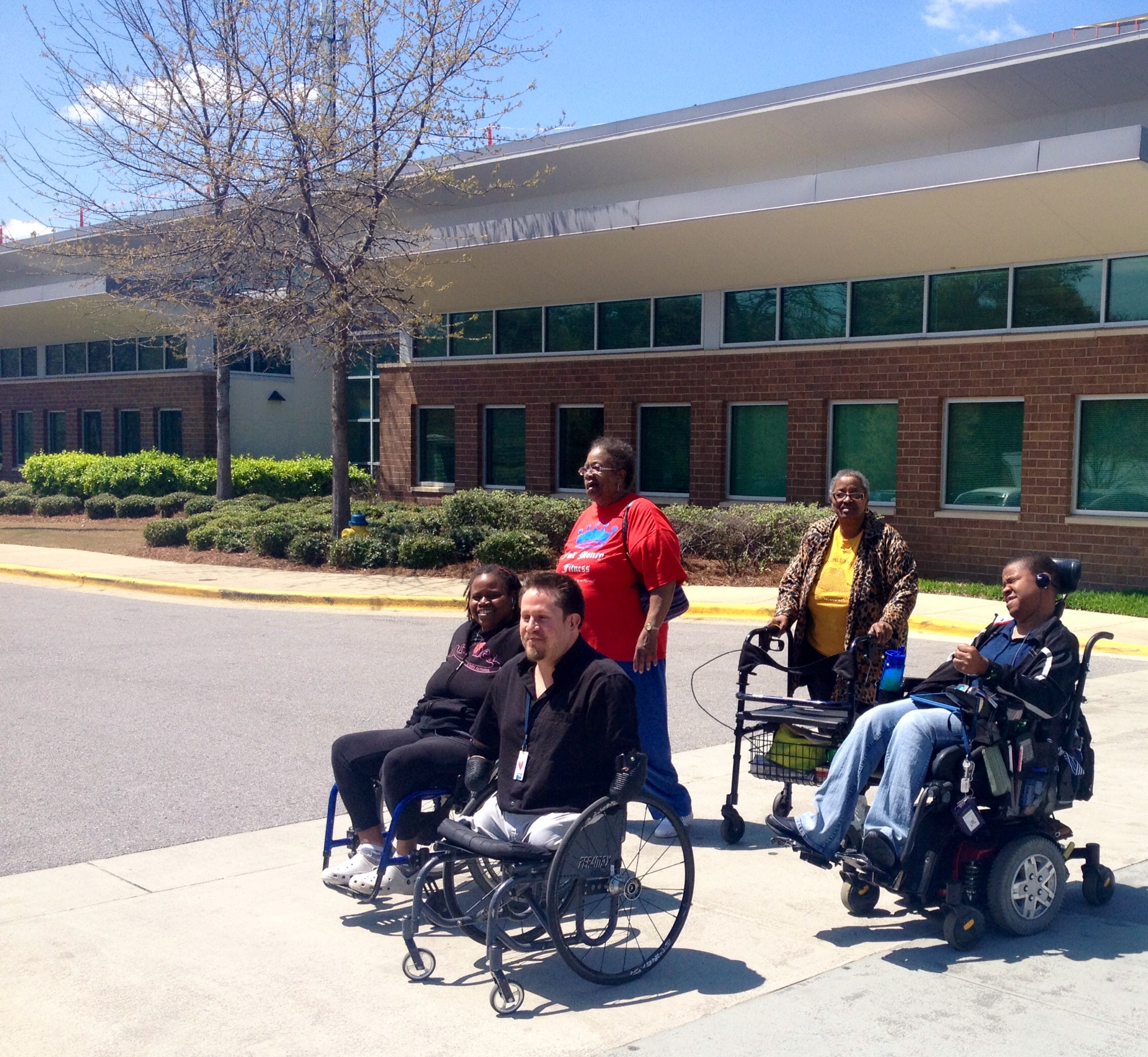Walking represents one of the best, most available options for engaging in low-impact physical activity—in fact, it is the most popular form of physical activity in the US.
Not everyone walks in the same manner. Some individuals walk upright; others walk with a limp or other gait abnormality; many use an assistive device to aid in walking, such as a wheelchair, cane, or walker.

Walking clubs are exactly what they sound like: groups of people who get together to enjoy the physical and mental benefits that come from walking and social interaction and engagement. Walking groups are a tremendous opportunity to promote and improve health and wellness on multiple levels for individuals in a community.
If you are creating a walking club or group in your community, "scout your routes" to ensure that walks are inclusive of all potential participants. When creating or choosing a route for a group walk, conduct a walking audit in advance to ensure it is fully accessible for all potential walkers, regardless of ability level, age, or fitness level. Ensure the following features exist to create a fully inclusive route:
- Route is flat or features minimal, gradual elevation change(s)
- Elevation changes greater than one-half inch feature ramps to make them more feasible
- Paths are at least 36 inches wide throughout the entire route, and at least 48 inches wide for turns
- Slopes are no more than 1:20 rise-to-run ratio, and cross slopes no more than 1:48
- All surfaces are smooth (sidewalks, paved trails, boardwalks, etc.) and do not act as obstacles (broken, splintered, non-existent in areas, no connectivity, etc.)
- Connectivity exists throughout the route in the form of seamless accessible features such as curb cuts, ramps, and crosswalks
- Crosswalks are well marked and feature multiple signals (audible and visual)
- Curb cuts and other elevation and surface changes are marked in some manner to alert participants, such as with truncated domes
When creating a new route, include individuals with a wide range of ability and fitness levels in the planning and audit process. This route creation committee can ensure that routes are appropriate for all potential members of walking groups, create a consensu on the overall difficulty of the route for all portential participants, and highlight any areas that may be especially problematic and/or need to be avoided.
Additional Resources:

